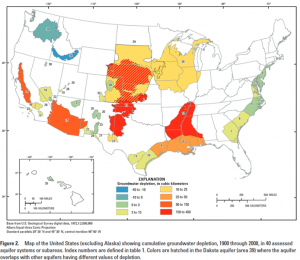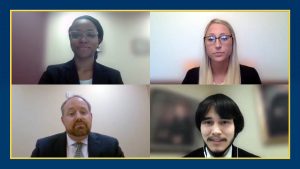Marquette’s presence at the Global Water Center helps Milwaukee lead in Water Innovation
Less than a mile away from the Law School, some of the country’s most important work is taking place at the Global Water Center, led by the Water Council. Water may seem like a basic right to most Americans, but across the globe, it is often a precious commodity. This will soon become a new reality in the water rich Midwest, as the demand on area water resources leads to an increasingly critical supply. The U.S. Geological Survey reported that pumping of groundwater in the Chicago-Milwaukee area from 1864 to 1980, has lowered groundwater levels by as much as 900 feet. Below is a map that illuminates the critical depletion affecting U.S. ground water supplies.
From Groundwater Depletion in the United States (1900-2008), USGS Scientific Investigations Report 2013-5079.
Facing the critical groundwater depletion taking place across the country over the last 100 years, Milwaukee non-profit, the Water Council, is rising to meet the challenge. The Water Council is dedicated to solving serious global water challenges by supporting innovation in freshwater technology and driving new solutions to a world that increasingly needs them. The Council has led the way through impressive collaboration—connecting 238 water technology businesses and a leadership network of 200 members from around the world. This expertise has included input from several Marquette University departments, including Marquette University Law School.


